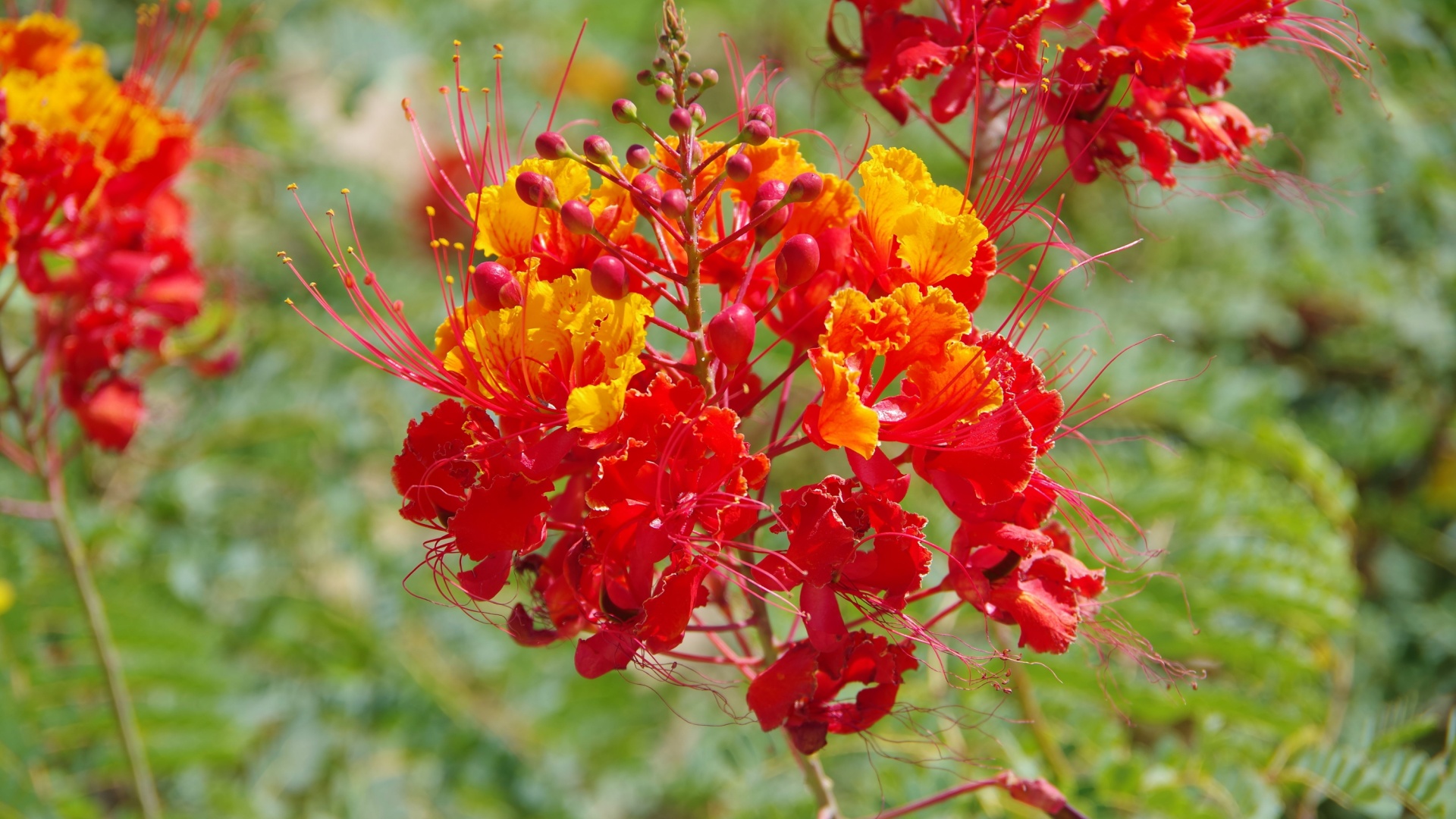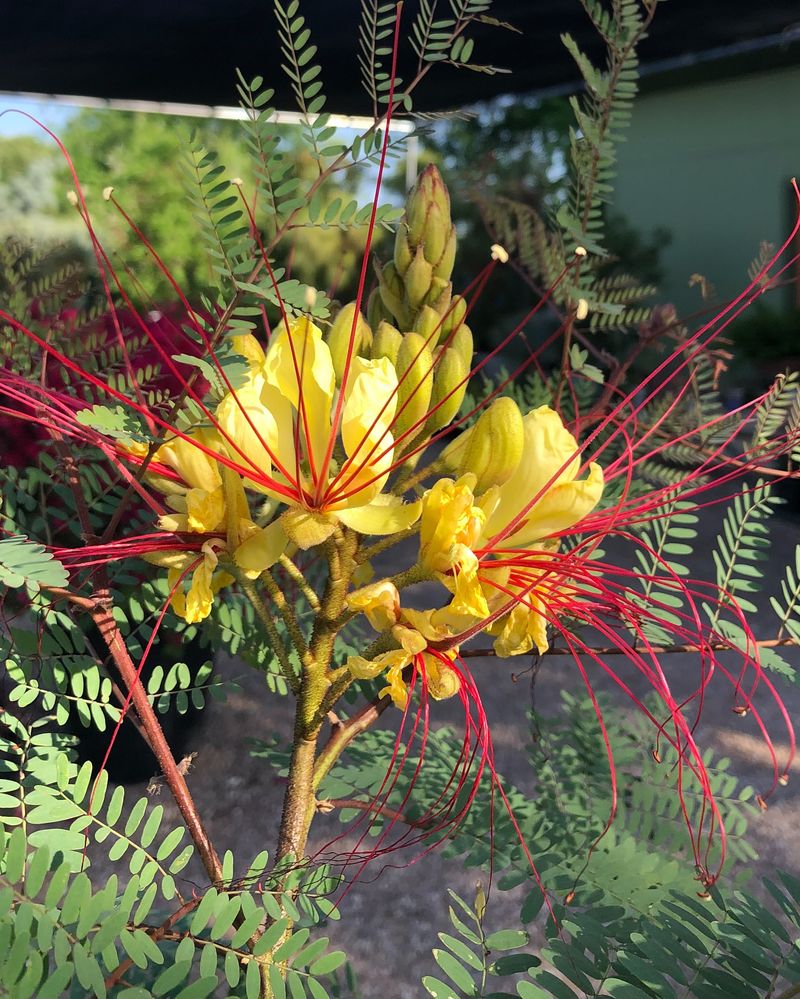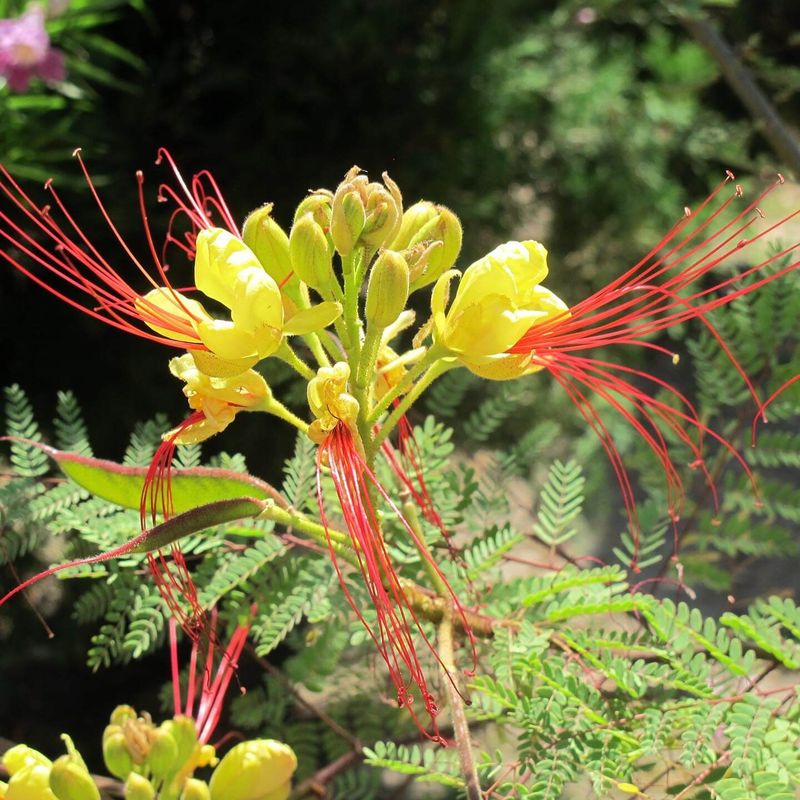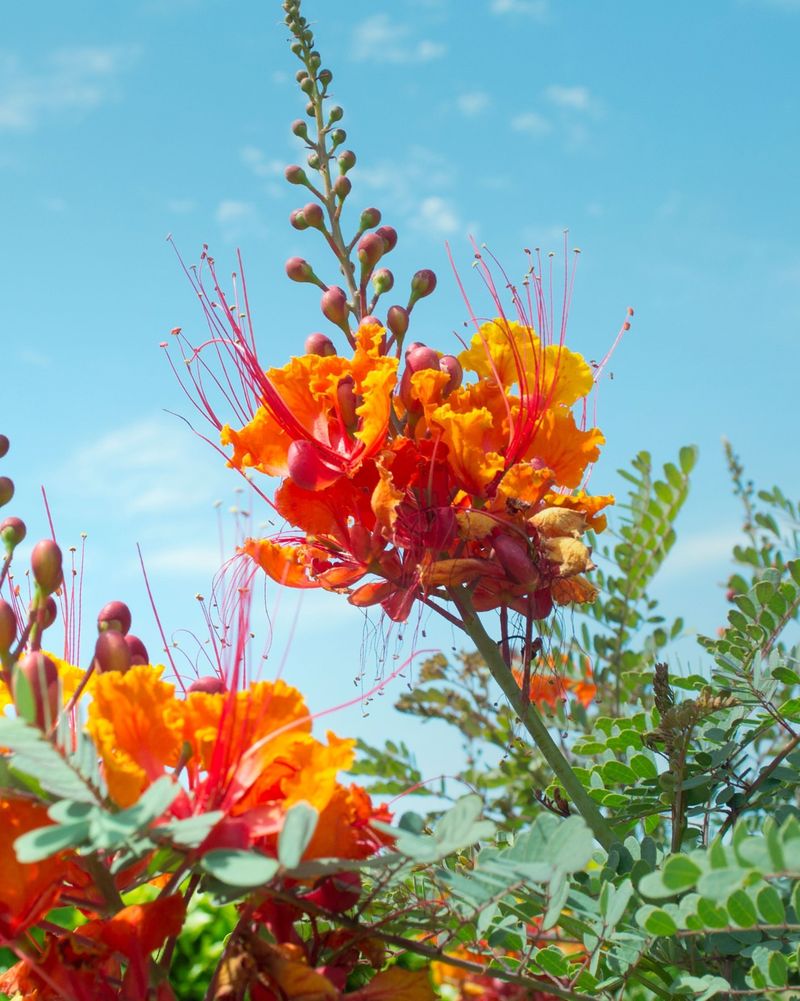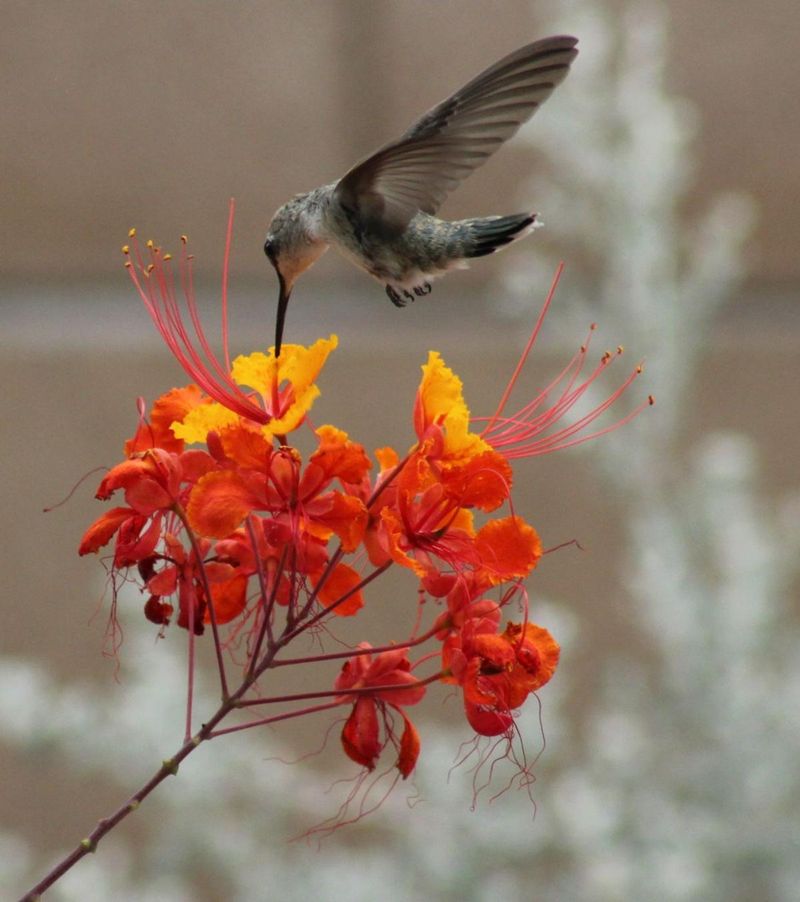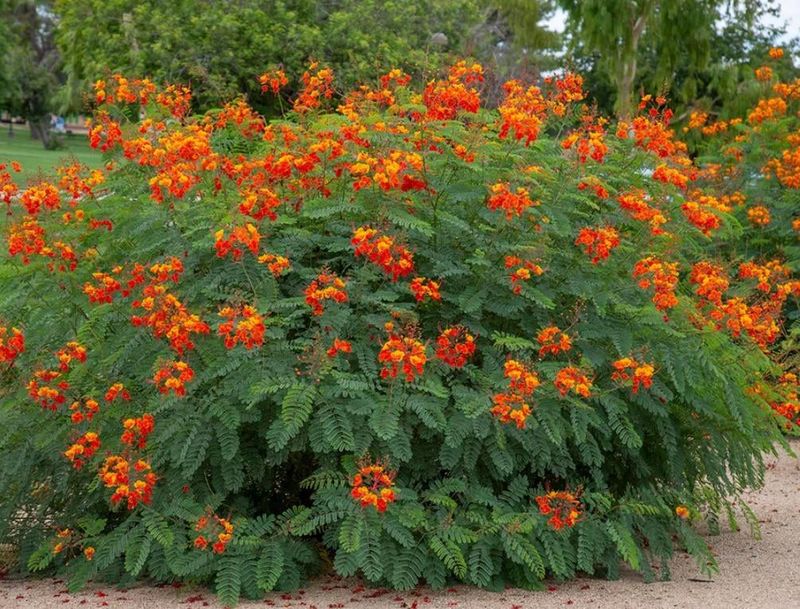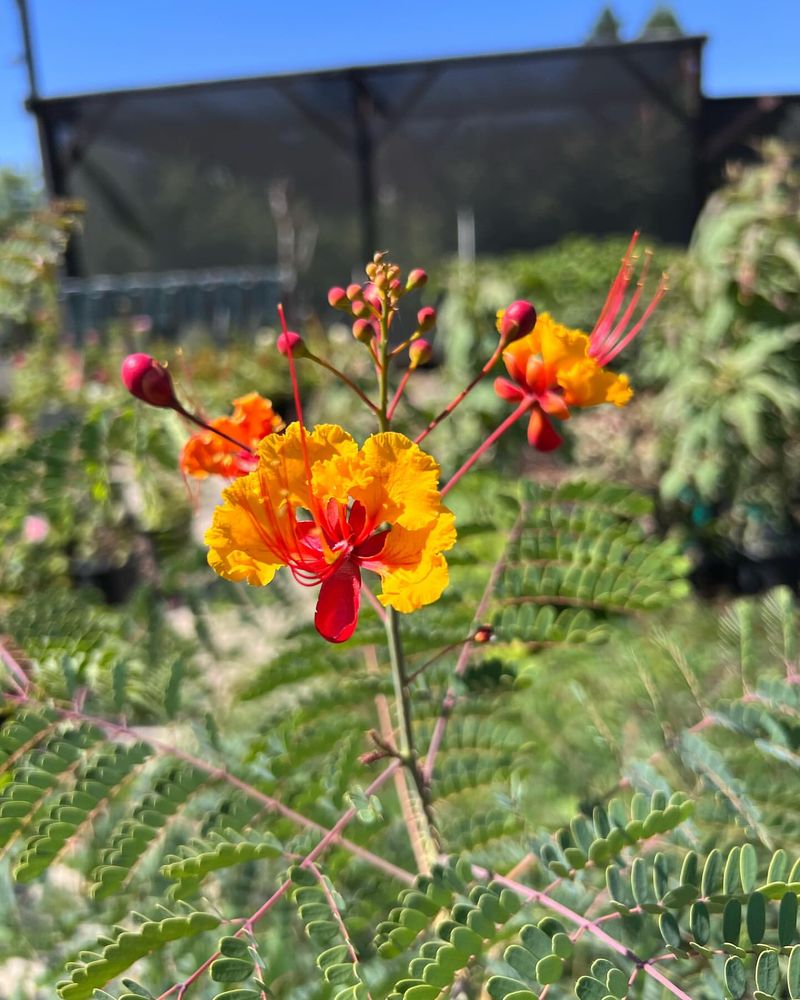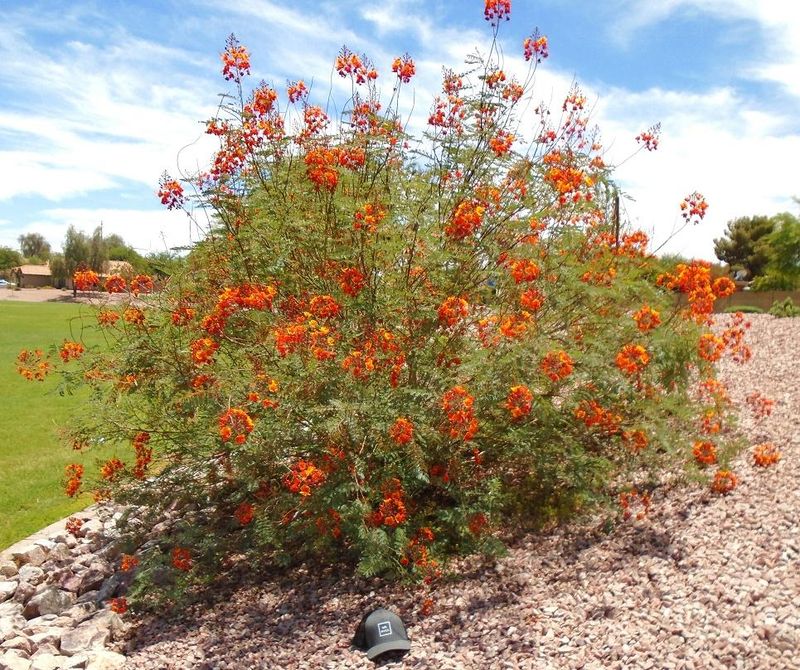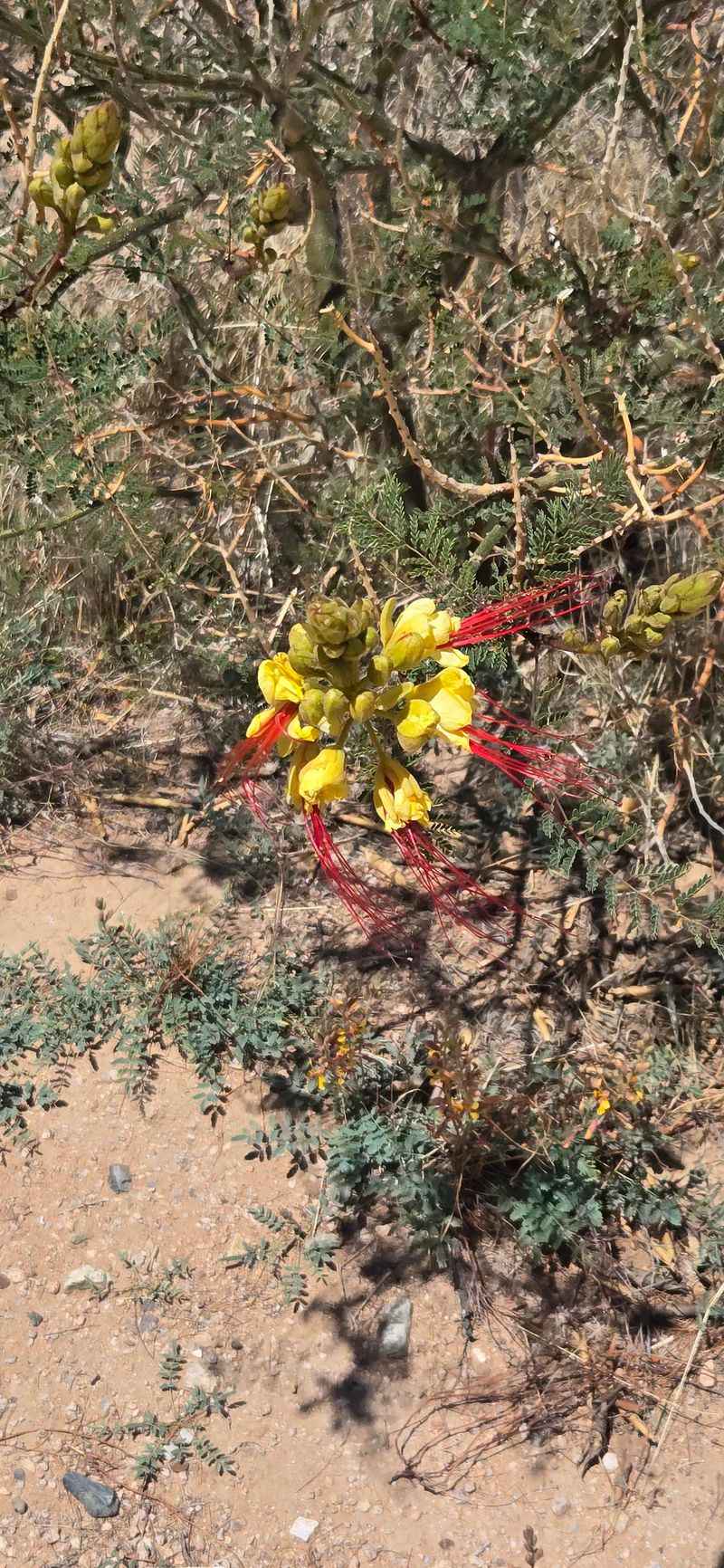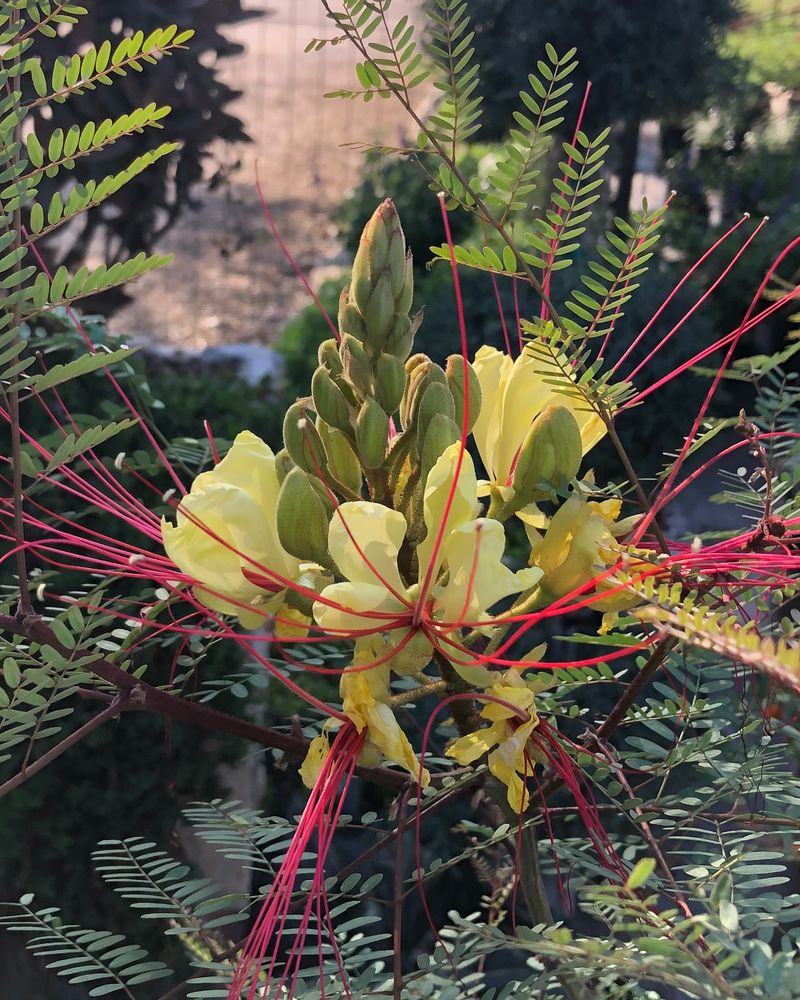Your Arizona yard may be sun-soaked and bone-dry, but that doesn’t mean it has to look lifeless. Just when most plants are throwing in the towel, one native stunner is bursting into bloom, turning heads and feeding pollinators.
If your landscape needs a late-season lift, Desert Bird of Paradise is the bold beauty made for Arizona heat.
1. Drought-Defying Summer Bloomer
While most plants struggle in Arizona’s summer heat, Desert Bird of Paradise shows off its brightest colors. The striking yellow flowers with long red stamens appear when temperatures soar above 100°F.
Garden centers often sell these beauties in full bloom during June through September. Their heat-loving nature makes them perfect for spots where other flowering plants simply can’t survive.
2. Native Desert Survivor
Despite common confusion, the true Desert Bird of Paradise (Caesalpinia gilliesii) is actually native to South America but has naturalized perfectly in the Sonoran Desert. Its incredible adaptation to our harsh conditions has earned it honorary native status among gardeners.
The plant’s deep taproot system searches out scarce groundwater, allowing it to thrive where imported plants fail miserably.
3. Water-Wise Wonder
Forget constant watering! Once established, Desert Bird of Paradise needs minimal irrigation, making it perfect for desert landscaping. During its first year, water deeply once weekly to establish strong roots.
After that, this resilient plant only needs supplemental water during extreme drought periods. Many homeowners report success with just monthly deep watering during summer and almost none in winter.
4. Butterfly And Hummingbird Magnet
Those exotic-looking flowers aren’t just pretty—they’re powerful wildlife attractors! The unusual shape and bright colors of Desert Bird of Paradise blossoms act like neon signs for hummingbirds and butterflies. Many Arizona gardeners plant them specifically to create backyard wildlife habitats.
The long red stamens contain nectar that’s particularly attractive to our native Costa’s and Anna’s hummingbirds during their summer breeding season.
5. Grows Quickly From Seeds
Got patience? Desert Bird of Paradise grows surprisingly fast from seeds collected from its distinctive bean-like pods. Scratch the seed coat slightly before planting to help with germination. Young plants can reach blooming size in just two years.
Many gardeners enjoy starting them in small pots before transferring to the landscape, watching them grow from tiny sprouts to magnificent flowering shrubs.
6. Natural Privacy Screen
Looking for a beautiful way to block nosy neighbors? Desert Bird of Paradise grows 6-10 feet tall and nearly as wide when happy. The feathery, fern-like foliage creates a semi-transparent screen that softens harsh views.
Unlike solid walls, this living fence allows cooling breezes through while still providing privacy. Plant several 4-5 feet apart for a stunning flowering hedge that won’t break your water budget.
7. Loves Being Pruned
Grab those garden shears! Unlike fussy plants that sulk after trimming, Desert Bird of Paradise responds to pruning with vigorous new growth. Many gardeners cut it back by one-third in late winter. This annual haircut prevents the plant from becoming too woody and stimulates more of those spectacular blooms.
The trimmed branches can even be used in dramatic floral arrangements, though they won’t last as long as commercial cut flowers.
8. Cold-Hardy For Most Of Arizona
While truly tropical plants turn to mush at the first frost, Desert Bird of Paradise stands strong through Arizona winters. Established plants easily handle temperatures down to about 15-20°F without damage.
In higher elevation areas like Prescott or Flagstaff, they might need protection during extreme cold snaps or planting against a south-facing wall. For most Phoenix and Tucson area gardens, winter protection isn’t necessary at all.
9. Low-Maintenance Landscape Star
Busy homeowners rejoice! Desert Bird of Paradise demands almost nothing from you. No special fertilizers needed—in fact, too much nitrogen produces fewer flowers and more leafy growth. The plant rarely suffers from serious pest problems in Arizona gardens.
Its naturally open growth habit allows good air circulation, preventing the fungal issues that plague many dense shrubs. Simply trim away dead branches occasionally to keep it looking tidy.
10. Watch Those Seedpods!
One cautionary note about this beautiful plant: Desert Bird of Paradise produces abundant bean-like seedpods that can self-sow enthusiastically. After flowering, distinctive 3-inch pods develop, eventually splitting open to release seeds.
Some gardeners remove the pods before they open to prevent unwanted seedlings. Others embrace the volunteer plants, sharing extras with friends or moving them to new spots in the landscape for free garden expansion.

